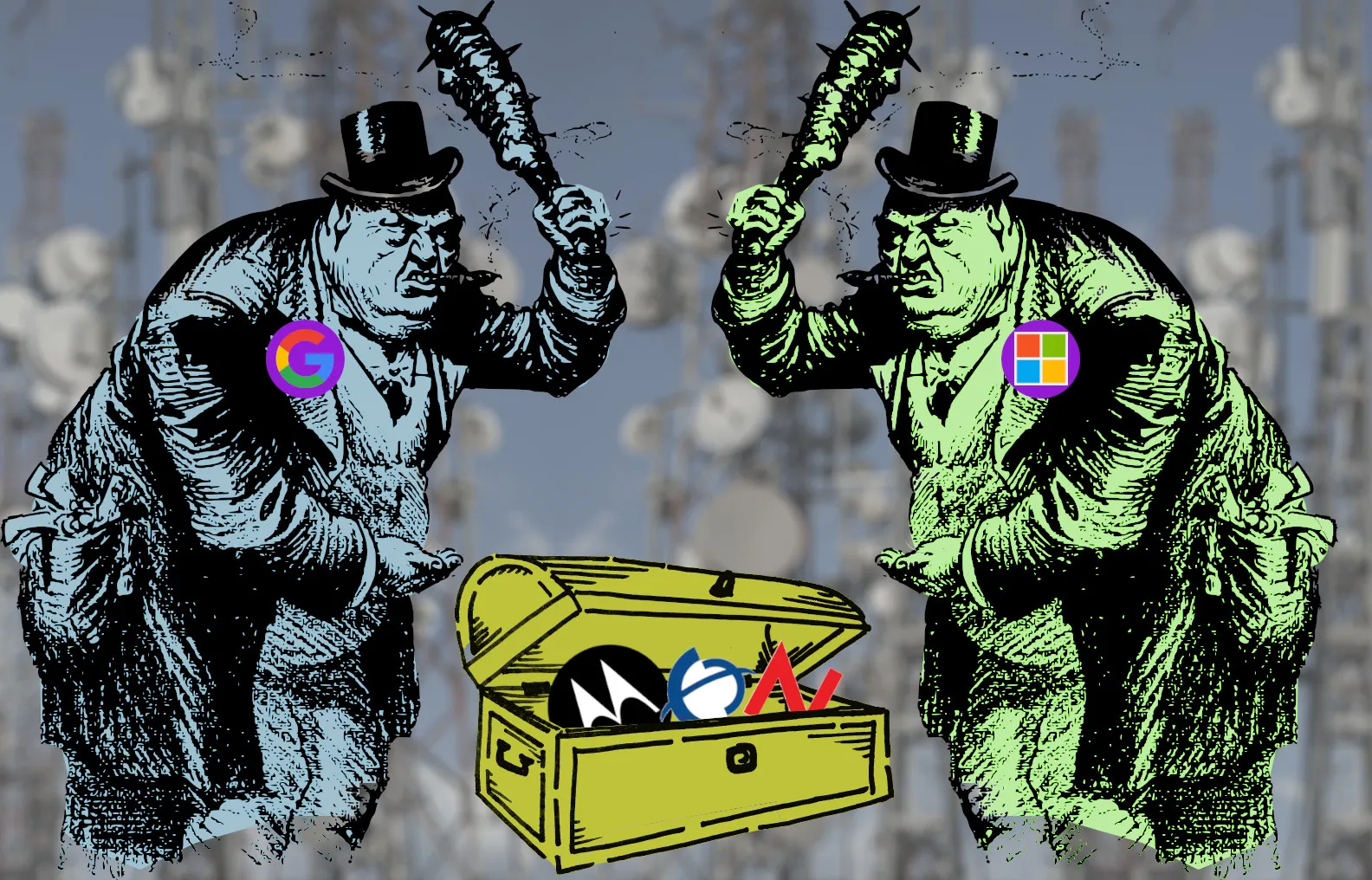
The monopoly strategy behind the Google/Microsoft mobile patent wars
March 9, 2023
Originally published at pluralistic.net
Cory Doctorow
Capital-as-power, a framework from Jonathan Nitzan and Shimshon Bichler, holds that companies don’t seek to be as profitable as possible – but rather to accumulate as much power as possible. A company doesn’t seek to be as big as possible, but rather, as dominant.
There are two strategies for accumulating power: one is “breadth”: to grow the market as much as possible, thus accumulating profits faster than the average competitor, eventually taking a commanding lead over the rest of the field.
The other strategy is “depth,” dominating your sector by capping its growth and then taking as much business away from your rivals as possible – if the industry is crucial (like, say, software), then dominating it gives you a lot of power, even if you’re strangling it.
In a paper in the Review of Capital as Power, York University’s Chris Mouré analyzes a bizarre moment in the history of mobile phones through this lens: the moment when Google and Microsoft went on a buying spree for also-ran telcoms companies.
This was back around 2010-11, when Microsoft bought up the empty husk of Nortel and its 6,000 crucial mobile computing patents, as well as a huge portfolio of mobile computing patents held by Novell that Microsoft bought through a consortium it co-dominated with Apple.
In retaliation, Google bought up Motorola,, spending even more than Microsoft (Microsoft’s patent acquisition bill was $4.5b; Google’s was $12.9b), a move Larry Page said would “level the mobile playing field.”
Microsoft’s motivations for the Nortel and Novell acquisitions were clear enough: neither company was making anything. They were just vessels for holding and using government-issued monopolies (AKA “patents”).
Motorola WAS a going concern back then, but it quickly became clear that Google didn’t give a shit about Motorola as a productive business. After blowing $12.9b on Moto, Google broke it into pieces and sold them off at a discount that didn’t come close to recouping
Mouré looks at these acquisitions through the capital-as-power lens and concludes that these patent wars marked the turning point when Google switched from a “breadth” strategy (growing the pie) to a “depth” one (owning the pie).
This switch is inevitable. Breadth only gets you so far because it relies on beating the average – and when a firm gets big enough, it becomes the average. When that happens, companies switch from market-growing to market-cornering and price hiking.
Tech is a hard market to hike prices in because “any Stanford dropout with a computer can create the next ‘game-changing’ piece of software.” To increase profits, big companies generally turn to acquisition – buying up small competitors to gain their patents and other IP.
This is a great strategy in light of US anittrust theories over the past 40 years, during which time antitrust regulators promised to leave companies alone as they formed monopolies, provided they didn’t hike price after attaining monopoly dominance.
What’s more, IP is an ideal tool for monopolists seeking to increase profits – IP (once known as “authors’ monopolies”) are a form of monopoly that you can never get into trouble for.
Not only will the state let you use IP to create a monopoly – they’ll help you, using their courts to exterminate competitors who “violate your IP rights.”
https://locusmag.com/2020/09/cory-doctorow-ip/
Thus the signature model of the 21st century tech company: a “platform” with a “two-sided market” – a company that captures as many customers as possible in a walled garden, then charges other businesses to access those customers.
Microsoft and Google may have very different revenue sources, but both of them are practicing this form of chokepoint capitalism, as are Apple, Facebook, Uber, and other companies that, from a distance, seem to have very different business models.
Google’s true operating costs aren’t captured by adding up its salaries and servers – a correct accounting must include the costs of acquiring companies and with them, patents. That’s the cost Google must incur, if is to retain its power.
Mouré shows that while Google and Microsoft weren’t directly competing at the time of the patent wars, they were both jockeying to seize power in a new, emerging market – mobile computing.
The point of the patent wars wasn’t to guarantee their own profits – it was to deny the other company its profits. It’s “strategic sabotage.” Microsoft didn’t buy Nortel’s patents so it could make its own devices – they bought them to stop Google from making ITS devices.
Today, Microsoft has a different kind of strategic sabotage, this one aimed at Facebook – Mouré writes that buying Linkedin “may have been a deliberate response to an encroaching competitor: Facebook.”
